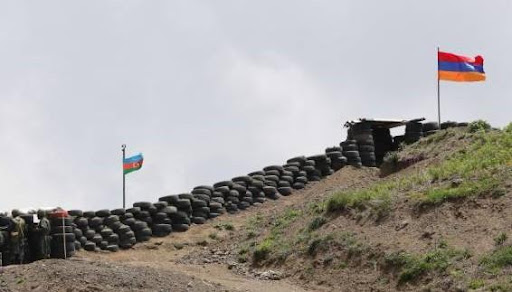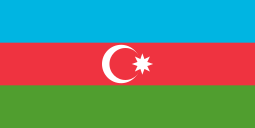
Peace has no borders!
It may take another 30 years to delimit the borders between Azerbaijan and Armenia. Will we wait?
08 December 2022
By Arif Aliyev
These two previously unspeakable words are on everyone's lips today: delimitation and demarcation. It is believed that the delimitation and demarcation of borders is very important and the main step towards a radical solution to the conflict between Azerbaijan and Armenia, the main condition for concluding a long-awaited peace treaty. But when politicians talk and journalists write about it, do they realize how time-consuming and complex these processes really are? Do they take into account that, for example, with Georgia, the borders between our countries have been clarified on the map (delimitation) and marked on the ground (demarcation) for 30 years, and a third of the work is still ahead. This is despite the fact that it is incomparably easier for Azerbaijan to find common ground with Georgia in land disputes than to agree on the same issues with Armenia.
The European Union promises to provide methodological assistance, and Russia will provide accurate large-scale military maps to speed up the delimitation process. This is greatly appreciated but does not guarantee the speedy resolution of many border disputes. If perfect technology is the solution to the problem, then why is the European Union still not eliminating the long-standing border dispute between France and Italy over a small cave at the top of Mont Blanc? Or is it not seeking agreement between Croatia and Slovenia, Greece and Turkey, sometimes disputing not even land, no, but bare rocks? And why are these high-precision military maps not helping Russia to delimit borders in the Arctic, on the Kuril Islands?
Because the main difficulty of this process is not in the absence of good maps and methodology, but in the fact that determining the place for the establishment of boundary pillars, the parties must come to a mutual agreement taking factors into account such as justice, security, rationality, and in some cases, the elimination of historical errors, including the latest periods. As soon as the work on delimitation begins, we will face dozens of similar problems, each of which will require a thorough study.
Since the appearance of the outlines of the two independent states of Azerbaijan and Armenia on the world map, the complex of contradictions in their relations has made the borders between them shaky and vague, thereby creating conditions for the toughest confrontation. First during the ADR period, then in the first decades of Soviet power, Azerbaijan, under pressure from various forces, gave up some of its territories in favor of Armenia. But the neighbors, with small interruptions, continued to make new claims. So it was in the 1940s, and in the 50s, and in the 60s.
Recalling the border conflict with Armenia in 1968-1969, the former head of Azerbaijan Heydar Aliyev noted:
“Armenia wanted to annex some lands in the border regions of Azerbaijan. They took out old cards from 1928 or 1929 years. The negotiations lasted two or three years. These negotiations, together with Veli Akhundov, were conducted by Mammad Iskanderov, Enver Alikhanov and Second Secretary Elistratov. Unfortunately, as a result of these negotiations, in May 1969, the Supreme Council of Azerbaijan decided that these border lands really belong to Armenia and should be transferred to it. I know how this unfair decision was made at that time… I want to say that Veli Akhundov, of course, did not support the transfer of these lands. However, pressure from above, that is, from Moscow, pressure from the right and left led to the adoption of such a decision. Having become the head of Azerbaijan in July, I studied this issue for a month and as a result refused to implement this decision. They tried to solve the issue in their favor for a long time, but I didn't let them… They did not openly say this, but through senior officials they brought to my attention that it would be necessary to clarify the maps of Azerbaijan and Armenia, because certain mistakes were made in the 1920s. I told everyone that our borders are known, defined, and there is no need to change anything.”
But this did not mean the end of territorial disputes. Border conflicts arose both in the 1970s and in the 80s. Azerbaijan has not always managed to get out of them without losses.
One of the last such cases before the start of the Karabakh war occurred in 1983. The story was connected with a plot of 1,675 hectares belonging to the village of Kemerli in the Kazakh region of the Azerbaijan SSR.
The population of Kemerli, located near the village of Doveg in the Noyemberyan district (now Tavush region) of the Armenian SSR, organized a mass protest against the decision to transfer this wooded area to the neighboring republic. On the instructions from Moscow, on October 24, 1984, a commission consisting of 8 people was sent to Kemerli, including Rasizade, Deputy Chairman of the Council of Ministers of the Azerbaijan SSR, Suleymanov, First secretary of the Kazakh District Party Committee, Movsesian, Deputy Chairman of the Council of Ministers of the Armenian SSR, Mamyan, first secretary of the Noyemberyan District Party Committee. Angry residents of Kemerli in the area “Batagly Bulag” (Swampy spring) turned over the cars of the commission members, and they themselves were dragged to the village. They were forced to draw up and sign an act stating that this land belongs to the village of Kemerli and cannot be transferred to anyone. After that, the members of the commission were released.
Such a case in the USSR was a rare audacity. To eliminate the protest, normalize the situation and punish all the guilty, high-ranking party officials from Moscow and Baku, heads of the Ministry of Internal Affairs, the KGB gathered in Kazakh. An investigative group was organized under the leadership of the prosecutor of the Investigative Department of the USSR Prosecutor's Office Astashin, which included representatives of the prosecutor's offices of both republics. The reports prepared by the party and law enforcement agencies did not reflect the essence of the event, leaving the main cause of the conflict in the shade.
At a meeting of the Bureau of the Central Committee of the Communist Party of Azerbaijan, on November 12, 1984, the issue of "The conflict in the village of Kemerli of the Kazakh region" was discussed. With instructions from Moscow, the territorial claim of Armenia was settled and the punishment of several residents of Kemerli put an end to history.
There is no one in this area right now. It is impossible to move through it, since the area is mined on both sides. This was done in the late 1980s after the territorial disputes between Armenia and Azerbaijan turned into a real war.
The war removed some old territorial issues, but gave rise to new ones. Azerbaijan no longer demands its seven occupied regions back from Armenia, it has won them back, now Armenia complains that during military operations in May 2021 and September 2022 Azerbaijan occupied 50 square km of its lands, which are subject to return, and the border should be moved. Many such disputes and mutual claims have accumulated over the years. At the stage of border demilitarization, each of them will be discussed. In some cases, the European methodology and Russian maps will help, and in some cases other factors will play a decisive role.
Of course, in order to establish stable relations between neighboring countries, the delimitation and demarcation of borders is simply mandatory. But in order to create peace, mutual recognition of territorial integrity and the establishment of diplomatic relations, there is no need to wait for the completion of these processes. Putting forward such a condition means discarding the signing of a peace treaty for later. Maybe for decades. Logic suggests the opposite: rather, it is in conditions of peaceful coexistence that the problems of delimitation and demarcation can be successfully solved without serious excesses.
After all, peace has no boundaries.












